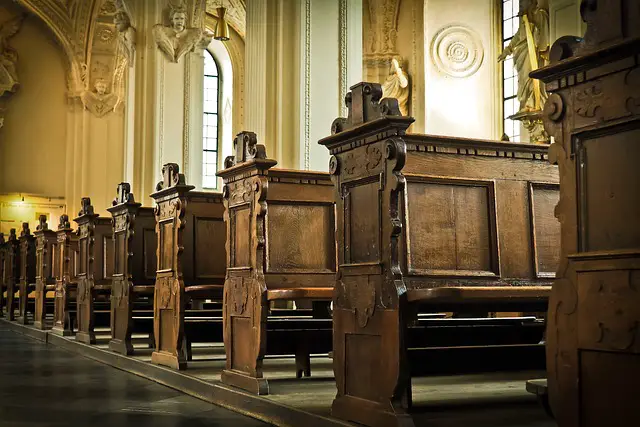Catholic facts
Why Catholics use Pews and history of Pews
A pew is a long bench seat in a church, typically with a backrest. Many churches have pews, which are used by the congregation during worship services. The word “pew” comes from the Old French word “puier,” meaning “to push or thrust.”
Pews were first used in churches in the 12th century. At that time, they were simply benches placed along the walls of the church. By the 13th century, pews had become more common, and they were often located in the nave, or main body of the church.
Pews were originally designed for use by the clergy and other important people in the church. However, by the 14th century, they were being used by laypeople as well. In some churches, pews were assigned to specific families or groups of people.
Today, pews are still common in many churches. They provide a place for worshipers to sit during services, and they can also be used as a place to store Bibles and other religious books.
History of pews
Pews have been around for a long time. They first became popular in Europe in the 1500s following the Protestant Reformation. Before that, church floors were usually bare because the congregation stood during services. Some churches kept moveable, backless stone benches around the walls for the elderly to sit on. Eventually, these started to be fixed to the floor, and stone was replaced with wood. Some of the oldest pews still standing are from the early 1600s.
Pews made it possible for parishioners to sit during the lengthy sermons typical of Protestant services. Catholic churches later followed the lead of Protestant churches and introduced pews, which were set up in rows facing the pulpit. Although church services had previously been more interactive, this new format—with pews set up in rows facing the pulpit—was arguably more inclusive of churchgoers, who were expected to listen attentively.
In the 20th century, the use of pews in churches began to decline. As church attendance declined, many churches found that they had too many pews and not enough people to fill them. Some churches started to remove pews, while others replaced them with chairs or other forms of seating. Today, many churches have moved away from pews entirely and opted for a more flexible seating arrangement that can be rearranged as needed.
About Author
























